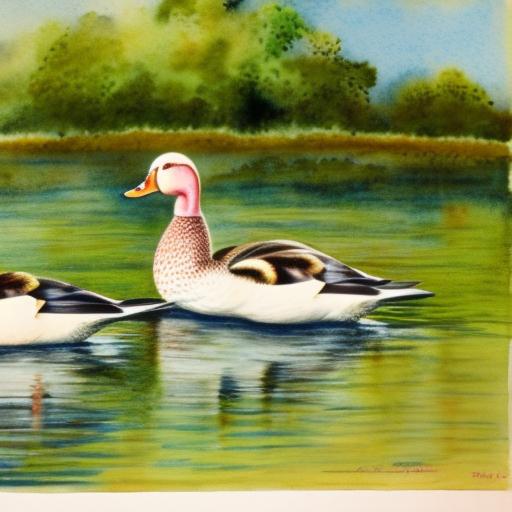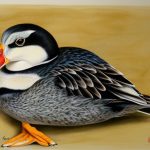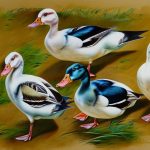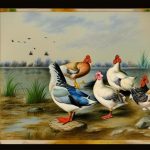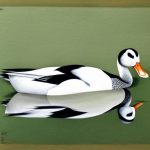Call ducks are a unique and charming breed of domestic duck that are known for their small size and distinctive vocalizations. They are often referred to as “miniature ducks” due to their petite stature, with the average adult call duck weighing in at just 1-2 pounds. Despite their small size, call ducks are hardy and adaptable, making them a popular choice for backyard poultry enthusiasts and small-scale farmers.
Call ducks come in a variety of colors, including white, gray, blue, and pastel shades, and they are known for their friendly and sociable nature. They are often kept as pets due to their docile temperament and entertaining antics. In addition to being popular as pets, call ducks are also valued for their egg production and are sometimes used in exhibition and show competitions. Overall, call ducks are a delightful and versatile breed that can bring joy and entertainment to any farm or backyard setting.
Key Takeaways
- Call duck breeds are a small domesticated breed of duck known for their distinctive vocalizations and compact size.
- Call duck breeds originated in the Netherlands and were originally used as decoy ducks for hunting.
- Call duck breeds are known for their small size, rounded head, and short bill, with a variety of color patterns and markings.
- Call duck breeds are known for their friendly and sociable nature, making them popular as pets and for exhibition purposes.
- Care and maintenance of call duck breeds include providing a suitable living environment, proper nutrition, and regular veterinary check-ups to ensure their well-being.
History and Origin of Call Duck Breeds
The exact origins of call ducks are somewhat mysterious, but it is believed that they were first developed in the Netherlands in the 1600s. They were originally bred as decoy ducks for hunters, due to their small size and distinctive calls, which were used to attract wild ducks. Over time, call ducks became popular as pets and ornamental birds, and they were eventually brought to England in the mid-1800s.
In England, call ducks were further developed and refined, leading to the establishment of breed standards and the recognition of call ducks as a distinct breed. They were first exhibited at poultry shows in the late 1800s and quickly gained popularity for their charming appearance and endearing personality. Today, call ducks are kept and bred around the world, with dedicated breeders working to preserve and improve the breed.
Physical Characteristics of Call Duck Breeds
Call ducks are known for their small size and compact, rounded bodies. They have short, stout legs and a slightly upright posture, giving them a perky and alert appearance. Their heads are round and often adorned with a small, upright crest of feathers, adding to their distinctive and adorable look. Call ducks have short bills and bright, expressive eyes, which give them a friendly and engaging expression.
In terms of coloration, call ducks come in a wide range of hues, including white, gray, blue, pastel, and even pied patterns. Their plumage is often glossy and smooth, with a soft texture that adds to their appeal. Despite their diminutive size, call ducks are well-proportioned and balanced, with a graceful and elegant carriage. Overall, call ducks are a visually striking breed that is sure to capture the hearts of anyone who encounters them.
Behavior and Temperament of Call Duck Breeds
Call ducks are known for their friendly and sociable nature, making them a popular choice for those seeking a companionable pet or farm animal. They are highly intelligent and curious, with a playful and inquisitive demeanor that makes them entertaining to watch. Call ducks are also known for their vocalizations, which are high-pitched and distinctive, earning them the nickname “call ducks” due to their loud calls.
In addition to being friendly and vocal, call ducks are also known for their adaptability and hardiness. They can thrive in a variety of environments, including ponds, streams, and backyard enclosures. They are also good foragers and can be given free range to explore and graze. Call ducks are generally peaceful and get along well with other ducks and poultry, making them a great addition to a mixed flock.
Care and Maintenance of Call Duck Breeds
Call ducks are relatively easy to care for, but they do have specific needs that should be met in order to keep them healthy and happy. They require access to clean water for swimming and bathing, as well as ample space to forage and exercise. Call ducks should be provided with a balanced diet that includes commercial duck feed, as well as fresh fruits and vegetables. They also benefit from access to grit or small stones to aid in digestion.
In terms of housing, call ducks can be kept in a secure enclosure or allowed free range access to a safe outdoor area. Their housing should provide protection from predators and the elements, as well as ample ventilation and natural light. Bedding should be kept clean and dry to prevent health issues such as bumblefoot or respiratory problems. Regular health checks and preventative care, such as vaccinations and parasite control, are also important for maintaining the well-being of call ducks.
Common Health Issues in Call Duck Breeds
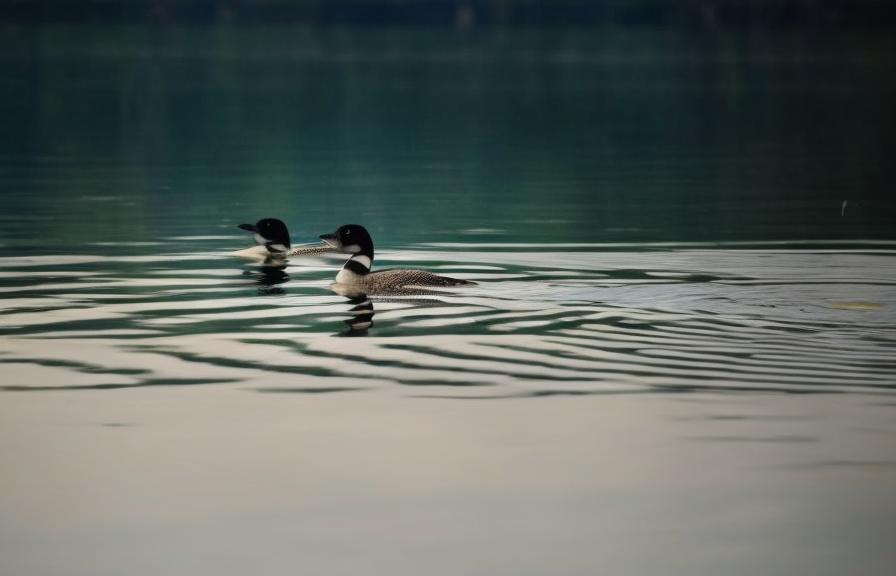
Like all domestic poultry, call ducks are susceptible to a variety of health issues that can impact their well-being. Common health concerns for call ducks include respiratory infections, parasites such as mites or worms, bumblefoot, and nutritional deficiencies. It is important to monitor the health of call ducks closely and seek veterinary care if any signs of illness or distress are observed.
Preventative measures such as regular cleaning of housing and bedding, providing a balanced diet, and practicing good biosecurity can help reduce the risk of health issues in call ducks. Additionally, providing access to clean water for swimming and bathing can help maintain the condition of their feathers and skin. Overall, attentive care and proactive management can help keep call ducks healthy and thriving.
Popular Uses and Purposes of Call Duck Breeds
Call ducks have a variety of uses and purposes that make them a valuable addition to any farm or homestead. They are often kept as pets due to their friendly nature and entertaining behavior. Their small size makes them well-suited for smaller properties or urban settings where space may be limited. In addition to being pets, call ducks are also valued for their egg production, with hens laying small but tasty eggs that can be used for culinary purposes.
Call ducks are also sometimes used in exhibition and show competitions, where their unique appearance and charming personality can be showcased. They are often included in waterfowl displays at agricultural fairs or poultry shows, where they attract attention with their vocalizations and striking plumage. Overall, call ducks are a versatile breed that can bring joy and utility to a wide range of settings. Whether kept as pets, egg producers, or exhibition birds, call ducks are sure to captivate with their endearing charm and delightful presence.
If you’re interested in learning more about duck breeds, you might also want to check out this informative article on when guinea fowl lay eggs. It’s a great resource for understanding the breeding habits of different poultry species and can provide valuable insights for anyone looking to raise ducks or other birds.
FAQs
What are call duck breeds?
Call duck breeds are a group of domestic duck breeds that are known for their small size, distinctive vocalizations, and wide variety of colors and patterns.
What is the origin of call duck breeds?
Call duck breeds originated in the Netherlands and were originally used as decoy ducks for hunting. They were later bred for their small size and attractive appearance, making them popular as pets and exhibition birds.
What are the characteristics of call duck breeds?
Call duck breeds are small in size, with a compact body, short bill, and a distinctive “call” or vocalization. They come in a wide range of colors and patterns, including white, gray, blue, fawn, and pastel shades.
What are the uses of call duck breeds?
Call duck breeds are primarily kept as pets and exhibition birds due to their small size, attractive appearance, and friendly disposition. They are also sometimes used for egg production and as decoy ducks for hunting.
How do you care for call duck breeds?
Call duck breeds require a secure and predator-proof enclosure, access to water for swimming, a balanced diet of commercial duck feed and fresh greens, and regular veterinary care. They also benefit from social interaction and enrichment activities.
Meet Walter, the feathered-friend fanatic of Florida! Nestled in the sunshine state, Walter struts through life with his feathered companions, clucking his way to happiness. With a coop that’s fancier than a five-star hotel, he’s the Don Juan of the chicken world. When he’s not teaching his hens to do the cha-cha, you’ll find him in a heated debate with his prized rooster, Sir Clucks-a-Lot. Walter’s poultry passion is no yolk; he’s the sunny-side-up guy you never knew you needed in your flock of friends!

